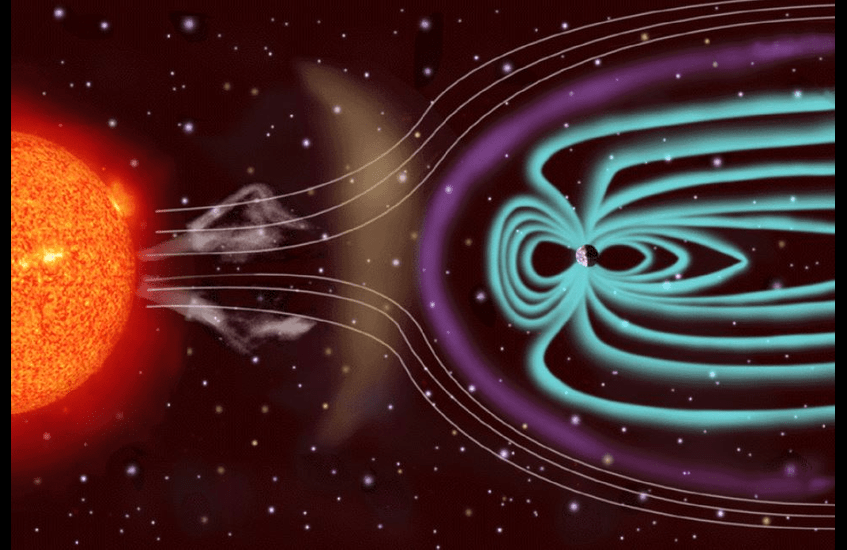Illustration: NASA
One of the important pieces in the puzzle to understand how Earth is coupled to space, is the transfer of energy from the solar wind to the ionosphere and the magnetosphere. For several decades the solar wind speed, its density and the magnetic field it brings have been reliably measured by space probes between the Sun and Earth, allowing many empirical models of ionospheric electrodynamics to be parametrized in terms of such measurements. However, this practice has ignored the large variations in time scales.
The two main processes describing the solar wind influence on geospace are (1) a directly driven component or dayside reconnection, and (2) an unloading component, associated with the release of magnetic energy via nightside reconnection. The two processes are poorly correlated on short time scales, but exactly equal when averaged over long time windows. This means that regression models of ionospheric electrodynamics that are based on solar wind data are time scale specific: Models derived from 1 min resolution data will be different from models derived from hourly, daily, or monthly data. This time scale dependency is demonstrated in a paper by Laundal et al. [2020] newly published in Scientific Reports. They quantify the effect on simple linear regression models of various geomagnetic indices, as well as deriving a time scale-dependent correction factor that can be used with the Average Magnetic field and Polar Current System (AMPS) model. Also they show how absolute estimates of the nightside reconnection rate can be calculated from solar wind measurements and geomagnetic indices.
In order to summarize their findings, lead author Karl M. Laundal explains: “In the paper, we show that regression models provide different results based on varying time scales of the input data. This is because the energy transferred from the solar wind to the magnetosphere may be stored for a long time in the magneotail before it suddenly is released through a magnetic substorm, causing disturbances we may measure on the ground”. To illustrate the time scale dependency, Laundal uses an analogy from the waterpark: “If you go to a waterpark, you will often find these tippy buckets that are filled continuously with water, and then suddenly overturn and spill out the water. Over time you will find good correlation between the water that goes into the buckets and the water they later spill out. But not necessarily on a short time scale”. Compared with the activities in our near Earth space, you can think of the solar wind energy as the water that is brought into the magnetosphere (= the bucket) and then suddenly released through the substorm process (= the water being spilt out of the bucket)”.
Laundal also notes that is should be possible to derive an empirical function that describes the “unloading” response, similar to how empirical solar wind-magnetosphere coupling functions describe ”loading”, or direct driving. “Such a function will be the topic of a future study”, he says.




